Nancy Bilyeau's Blog, page 4
September 13, 2021
Talking About Crime Fiction
I'm honored to be among the authors on a library panel discussing the research and writing of crime fiction on Tuesday, September 14th.
Anyone can watch this panel--it's online and free. You just need to register ahead of time. To do so, go here: https://newcity.librarycalendar.com/events/police-procedurals-cozies-and-historicals-writing-and-researching-crime-books
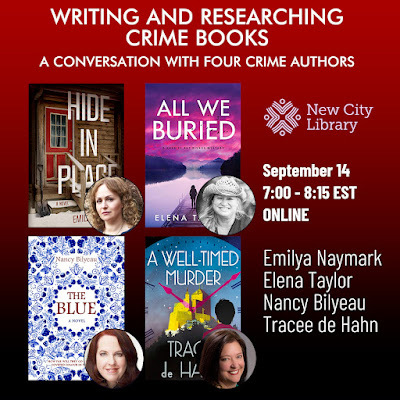
August 21, 2021
Erica Obey Interview: A Mystery in Woodstock
The New York town of Woodstock proves a perfect setting for the historical mystery Dazzle Paint, written by Erica Obey, a longtime resident. While many people think of the 1969 rock festival when you say "Woodstock," it's a place with a fascinating history that stretches much further back. There's mystery and magic in Woodstock, evocatively captured by Obey in her fifth novel.
 Erica Obey
Erica ObeyIn its glowing review, Publishers Weekly described Dazzle Paint as a "sprightly paranormal mystery" with a plot set in 1919 "that involve Communists, Kaiser Wilhelm, Lord Kitchener, Masons, anti-Semites, artists, trade unionists, and all manner of 'bogies, bogles, boggarts, abbey lubbers and buttery spirits.' ” It seems clear that Obey's background--she holds a Ph.D. in Comparative Literature and taught courses on Arthurian romance, fantasy and mystery fiction at various colleges, including Fordham--plays a role in crafting her novel. Also of note: She is the president of the New York chapter of Mystery Writers of America.
The story of Dazzle Paint: Gavin Fellowes, a damaged WWI veteran turned cynical psychic investigator, arrives in Ker-Ys, a Utopian art colony in Woodstock, NY, to investigate a series of purported fairy kidnappings of Communist garment workers who have taken over the failed Overlook Mountain House above the village. He is rapidly confronted with the willful blind spots of the well-meaning artists and the burgeoning anti-Semitism of the Catskills. With the help of Kate Ames, an illustrator and dazzlepaint designer who once might have been kidnapped by the fairies herself, Gavin must dig beneath the myth and legend to uncover an all-too-real occult threat that looms over Europe in the aftermath of the Great War.
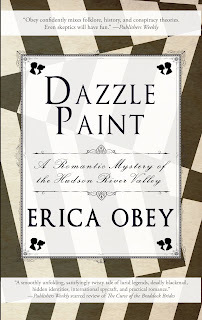 Dazzle Paint
Dazzle PaintI caught up with Obey to ask her about Dazzle Paint and its inspirations.
Nancy Bilyeau: How much of a role did living in Woodstock play in the creation of the plot in 'Dazzle Paint' and when did its various elements come to you?
Erica Obey: Oh, I think everything! I’ve been living up here for twenty years, but it hardly took that long to realize that you can’t live in these woods without feeling the voices of those that came before you. The colony where I live, Byrdcliffe, is truly a special place, which nurtured not only Bob Dylan but also artists as diverse as Sara Teasdale and Isadora Duncan.
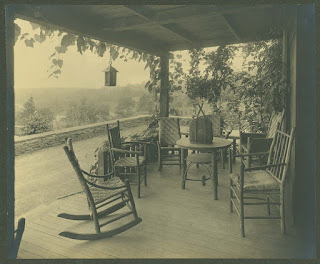 On the porch of "White Pines" at Byrdcliffe. The arts colony was founded in 1902
On the porch of "White Pines" at Byrdcliffe. The arts colony was founded in 1902and is still offering residencies to artists and writers.
NB: Why did you pick the year you did to set the story in, and do you think the effect of World War One on America is at all misrepresented in our culture?
EO: The aftermath of WWI crystallized attitudes and issues that we are still grappling with today. As I’m sure indigenous Americans find ironic, nativism has always been part of the American psyche, dating back to Astor Place riot of 1849, which was over rival English and American actors performing Macbeth. However, the massive immigrant influx in the wake of WWI and the Russian Revolution irrevocably coupled immigrants with criminality and Communism.
NB: How did you research the religious and class tensions that existed in the Hudson Valley in the 1910s and 1920s?
EO:
We are lucky to have a great historical society with extensive archives here in Woodstock as well as many residents whose family roots run very deep in this community. In fact, I lived in terror of a long-time resident reading a detail and crying, “WRONG!” I had a great deal of support from the Historical Society of Woodstock’s archivist, JoAnn Margolis, as well as Richard Heppner, the Town Historian, and Fern Malkine-Falvey, who fact-checked the book for me. I’m sure there remain many errors, but they are entirely my own. Arists at work on the town's Green.
Arists at work on the town's Green.NB:
Is the character of Kate Ames based on a real person? What inspired her?EO:
Kate and Melisandre’s origins lie in two pairs of girls who captivated the turn-of-the-century imagination, only to be later exposed as hoaxes. The Fox sisters were adolescent spiritualists famed for their table rapping. Elsie Wright and Frances Griffiths wittingly or unwittingly perpetrated the Cottingley Fairy Hoax, which convinced even such an arch-rationalist Sir Arthur Conan Doyle. I have always been fascinated by the question of whether these girls believed in what they were doing or whether they were the victims of cynical adult manipulation. (Or both. It’s obviously not an either/or question.)NB:
What about Gavin Fellowes? What was his genesis?EO:
There’s a lot of me in Kate – in particular her reticence. However, because she is so self-contained, I wanted a second narrator whose rational brain is at odds with his emotional/mystical one. The book is intended to be poised between two explanations and I would hope Gavin’s epistemological uncertainty would echo the reader’s.NB: How closely are the arts and political groups in your novel to the real groups that came to Woodstock in the early 20th century?
EO:
With the exception of the Byrdcliffe Colony, which I fictionalized as Ker-Ys, all the groups and locations in the novel are carefully researched and historically accurate. The American Communist Party did hold a summit at the Overlook Hotel in 1920, and it was this, not the later beatniks and hippies, that put Woodstock on Hoover’s watchlist. I did deliberately fictionalize Byrdcliffe because its past sins are at once more venial and far worse. In particular, the Whiteheads’ anti-Semitism is appalling and undeniable. On the other hand, the more criminal behaviors I invented for Ker-Ys never took place.NB:
Can you explain the term "dazzle paint" and its importance in the early 20th century?EO:
Dazzlepaint is one of the most sophisticated forms of camouflage ever invented. Attempts to conceal or disguise troops and weapons are nothing new; think of Macbeth’s Birnam Wood coming to Dunsinane. Somewhat less successful attempts include a rather ambitious plan to disguise horses as cows and haystacks to avoid aerial surveillance during WWI. But while rowboats and small crafts could be easily disguised as logs or outcroppings along the shore, it was impossible to use this approach to protect Allied ships from the threat of Germany’s U-Boats on the open sea. Not that people didn’t try: the first attempt to disguise a battleship as a floating island was so top-heavy, the camouflage fell off before the ship even left the harbor. In contrast, dazzlepaint doesn’t try to hide the fact you’re seeing a ship; its jagged lines and awkward angles are instead meant to confuse your perception of the vessel’s direction, speed, and size, so that it is impossible to accurately aim a weapon at it. Modern technology has reduced dazzlepaint to nothing but an elegant artifact, but it remains a tribute to the artistic power of misdirection (which in my mind is a central theme of this book).NB: Do you think there is a magical element to this part of the Hudson Valley that feeds your fiction and also feeds some of the artistic and political groups that have been drawn here?
EO:
It’s very easy if you live in the Hudson Valley. Folklore and mythology are part of the air we breathe. The tradition of legends and hauntings stretches from Washington Irving and Sleepy Hollow all the way to the twentieth-century Pine Grove UFO sightings. There are plenty of jokes about LSD in the water in Woodstock, but many of my neighbors would agree that there is a sense the boundaries between worlds have been lowered up here.NB:
How close is 2021 Woodstock to the popular stereotype of the town? In other words: what is it with tie-dye?!EO:
Despite its Bohemian reputation, Woodstock has always been a small town, where everyone knows everyone and families have roots (and feuds) going back centuries. The change over the last year has been seismic, with the Hudson Valley becoming one of the hottest property grabs in the country, and a lot of the long-time locals are (justifiably) feeling pushed out by affluent newcomers who have caused housing prices to skyrocket. The radical Maverick Festival in Hurley was founded in 1915
The radical Maverick Festival in Hurley was founded in 1915
 Novelist and poet Hervey White, Maverick's founder,
Novelist and poet Hervey White, Maverick's founder,
Traditionally, Woodstock has always been a combination of liberal and conservative, united by a stubborn individualism and a constitutional resistance to being told what to do. So the same impulse that drove Dylan to create some of the most iconic protest music in history also drives the bikers and hunters with their “Live Free or Die” bumper stickers.
NB:
Do you have advice for other authors who want to research an area for bits of history that can be woven into popular fiction?EO:
Every historical novelist has to find their own ways of engaging with the past. For me, it’s two very different sources: Landscape and archives. I love ruins and old buildings and happily, the Hudson Valley is replete with both. I love driving through old towns with either abandoned or repurposed architecture and trying to envision the lives of those who originally occupied those buildings.I’m also an archive junkie. Archives are a priceless resource. I could cite a variety of examples, but I’d like to shout out to Miss Stone, the Woodstock Social Studies teacher who assigned her 7th-grade students the task of creating an oral history of Woodstock life. The assignment dates back as far as 1963, but the carefully hand-written copies remain in the archives of the Historical Society of Woodstock to this day (in FAR better penmanship than my own. Grammar and spelling counted too.)
NB:
What's next for you? Will there be another book with these characters?EO:
I’m moving on to a contemporary Hudson Valley series, featuring a female programmer and the AI bot she taught to write (and solve) mysteries. Each book is a classic traditional mystery, and the entire series is a love letter to all the Golden Age mysteries I read growing up – as well as the small-town way of life that is rapidly vanishing from the Hudson Valley.NB:
In our time, "conspiracy theory" is a dirty word (or phrase). Do you have a view of conspiracies in history that surface in popular culture and how we can think of them differently?EO: T
here have always been conspiracy theories and secret doctrines, going back far before the Eleusinian Mysteries. They flourished in the 19th century, when amateur antiquarianism was replaced by professional historiography, especially among the (entirely male) Edinburgh school of rationalists. But WWI was a hotbed of very real conspiracy theories, beginning with the Zimmerman telegram, which finally drew the United States into the war. It is well-documented how British Intelligence sought a way of conveying the telegram’s information to the United States without betraying that they had cracked the Axis codes. Despite the admittedly horrible uses conspiracy theories have been forced to serve, I would argue they have always had an anti-authoritarian, anti-rational bent that articulates the concerns of marginalized thinkers.
Dazzle Paint can be ordered through the bookstore The Golden Notebook and bookshop.org.
December 10, 2020
My Six Favorite Podcasts on History
The other day I spotted this post on Facebook: “I’ve never ever listened to a podcast, I don’t understand why anyone does.” I immediately felt sorry for this person. I’ve had so MANY hours of entertainment, diversion, education, and amusement via podcasts.

All day I’m reading, writing, and editing, working on both novels and on a nonprofit website. After this, at night my eyes are shot; I can’t read anymore. Yes, there’s watching TV or listening to music. (I’m enjoying my latest mystery series discovery: “Detective,: on amazon. But a quality podcast really diverts and restores me. I have a hunch many of you like listening to show about history too, so I’d like to share my list:
These are my Top Six Choices:
1. “In Our Time.” Hosted by Melvyn Bragg; BBC. The list of topics covered in this podcast is breathtaking. It’s very hard for me to pick my favorites, but among the standouts are shows on the Gin Craze, Mary Shelley’s Frankenstein, Coffee, Agrippina the Younger, Holbein at the Court of Henry VIII, The Waste Land, Macbeth, King Tut, and Beethoven.
2. “You Must Remember This.” Written, produced, and narrated by Karina Longworth. I’ve had a challenging year, as many of you know. But I’ve been pulled through a stressful night more than once by these engrossing podcasts on the secret and/or forgotten history of Hollywood's first century. I particularly enjoyed her series on MGM History, Fact Checking Kenneth Anger’s Hollywood Babylon, and Six Degrees of Joan Crawford.
3. “Revolutions.” Written and narrated by Michael Duncan. I like the perspective and edge of these podcasts on history’s most significant revolutions, particularly the Russian one.
4. “The Bowery Boys.” Hosted by Greg Young and Tom Meyers. This lively podcast brings New York City history to life. The Gilded Age and Coney Island episodes were of course pretty relevant to my novel Dreamland. Really fun!
5. “Hardcore History.” Hosted by Dan Carlin. Dan is an emotional podcaster, and his programs go longer than most, but I found both his World War I series and his Japan series unforgettable.
6 “Our Fake History.” Produced by Sebastian Major. These shows uncover the “real” stories behind everyone from Cleopatra to Richard the Lionhearted to Nostradamus. Great debunking!
December 8, 2020
My Christmas Ghost Story
I'd like to share some reviews:
"The Gilded Age splendors of the Morgan Library come to life in this wonderful, warm-hearted tale of Christmases past, present, and future. Bilyeau weaves a wealth of gorgeous period detail into her ghost story of old New York, delivering genuine chills, family drama, and poignant romance with equal skill. A gorgeous holiday treat!"
—Mariah Fredericks, author of Death of a New American
"All the characters are poignantly human, and their social and cultural backgrounds add rich shadings to their actions. The warmhearted theme of second chances is well balanced with the mysteriousness of the woman’s identity, which Helen gets in trouble trying to uncover. Add a touch of Irish magic to the plot—Helen’s unusual dexterity with her hands reminded her late mother and husband of the aes sidhe—and you have an entrancing ghost story with a touching message."--Sarah Johnson, Reading the Past
"An enchanting story of the newly rising immigrants and the wealthy of old New York which you can read as quickly as you'd watch a film of The Christmas Carol and will also leave you feeling lovely. Has the author reinvented the much-adored annual Christmas novella? Curl up for an hour or so with a cup of something lovely and read The Ghost of Madison Avenue this season." -- Stephanie Cowell, author of Marrying Mozart
The ebook is priced at 99 cents for one week, up until December 15th. And it is available as a paperback as well--making it an excellent stocking stuffer. You can order the book by clicking here.
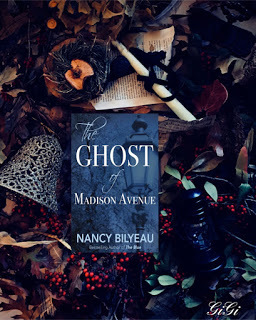
November 24, 2020
Sharing My Research on Coney Island
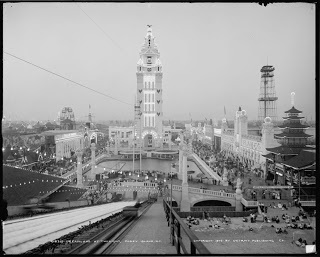 So if you'd like to escape to 1906 Coney Island for a bit, please stop in.
So if you'd like to escape to 1906 Coney Island for a bit, please stop in.
November 7, 2020
A Special Promotion for My Tudor Thriller 'The Crown'
In 2012 I published my debut novel 'The Crown,' set in Henry VIII's England and featuring as a main character a Dominican novice. It was a pick of the month for Oprah Magazine and a finalist for the Crime Writers Association's Ellis Peters Historical Dagger Award, and became a No. 1 bestseller on Amazon.
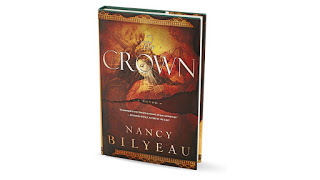
This month the publisher, Simon & Schuster, is running a promotion for the ebook: it costs $1.99 on Amazon and Barnes & Noble in the U.S. and Canada.
Reviews for the book:
"Bilyeau deftly weaves extensive historical detail throughout, but the real draw of this suspenseful novel is its juicy blend of lust, murder, conspiracy, and betrayal." - Oprah magazine
"In her debut, The Crown, Bilyeau delivers an engrossing thriller about a 16th-century Dominican novice caught up in royal intrigue. When Joanna Stafford leaves her priory to comfort a cousin who’s about to be burned at the stake, she ends up in the middle of the uproar surrounding Henry VIII’s decision to shut down England’s monasteries — and on a treasure hunt unlike any other, one that reveals secrets about her well-connected family and her faith." — Entertainment Weekly magazine
"Nancy Bilyeau's polished, inventive debut has all the ingredients of the best historical fiction: a broad cast of characters, well-imagined settings, and vivid storytelling . . . In Joanna Stafford, Bilyeau has given us a memorable character who is prepared to risk her life to save what she most values, while Stafford's desperate search for a lost religious relic will satisfy even the most ardent mystery fans.'' --Deborah Harkness, author of A Discovery of Witches.
To order it on Amazon, click here.
October 15, 2020
Interview With Judith Starkston
October 15th is the release date for her novel Of Kings and Griffins, inspired by the
historical Hittite empire and its most extraordinary queen. Here's a description:
For Tesha, priestess and queen, happiness is a world she can control, made up of her family and the fractious kingdom she and her husband rule within the Great King’s empire. But now the Great King is dead, and his untried son plots against them. Tesha fights back with forbidden sorcery and savvy. In yet another blow, the griffin king lures Daniti, Tesha’s magical blind sister, into a deadly crisis that Daniti alone can avert.
As danger ensnares everyone Tesha loves, her goddess offers a way out. But can Tesha trust this offer of divine assistance or is it a trap—one that would lead to an unstoppable bloodbath?
To order this novel, go here.
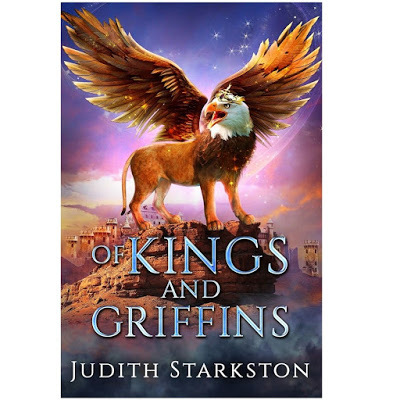
And now I'd like to share my interview with Judith:
Were you drawn to this period and place first and then came up with your main character, or did you want to specifically write a main character who is like Tesha and then found the best place for her?
Judith Starkston: My main character is based closely on a Hittite queen who was all but forgotten by history. When the historian-me discovered her, the fiction-writer-me fell in love. She ruled for decades over one of the most powerful empires of the Bronze Age (stretching over modern Turkey, Syria, Israel), a successful woman leader within a patriarchal culture. Her smarts and the kinds of conflicts she overcame drew me, as well as the daily life and customs of the time.
What did you base your descriptions on of daily life for your characters?
Judith Starkston: Fortunately, archaeology has brought much of the culture of the Hittites to light, uncovering details such as their foods and spices, clothing, and their homes, temples and palaces. I have traveled extensively in Turkey to study museum collections and site excavations. Of equal importance to depicting daily life are the archives of clay tablets that have been uncovered and translated. The historical woman, whom I call Tesha in my fiction (her real name was Puduhepa), was both a queen and a priestess. The tablets describe rites she performed—rituals we call magic. We don’t think of magic as
an integral part of our daily life, but it was for her. Without those records, I could never
have brought to life this psychologically fascinating aspect.
How would you describe the violence in war during this time compared to that of the
Trojan War period you wrote about in an earlier book?
Judith Starkston: The Trojan war (whatever form it may have had historically) took place on the western edge of the Hittite empire roughly in the same century as the reign of the queen I write about—so they aren’t really two separate periods.
Violence in war is woven tightly into Tesha’s world, as it was for Troy. She’s famous for
corralling her empire’s greatest rival, Ramses II, the pharaoh in the Biblical story of
Moses, into a peace treaty that suited her needs far more than his—and it lasted. But
that happened later in her life.
In my books so far, I’ve focused on the early part of her story as she meets the great
love of her life and follows a very bumpy road to power. In Of Kings and Griffins, one of
those “bumps” is an ongoing war with tribes who lived in the northern part of Anatolia
and viewed that land as their homeland even though the Hittites also claimed it, a
classic intractable conflict not unlike several in the world today. Each side gave the
other reasons to hate. I depict those realistically—raids, kidnappings, blinding of
prisoners, for example—while also showing my characters trying to find long term
solutions to that conflict, such as shared settlements and basic respect that sees past
old hatreds.
The combination of moral principles and pragmatism that this queen’s letters and other
records reveal is a big part of what drew me to her, although I enjoyed in this latest book
showing her struggling to find the balance between what’s “right” and what will actually
work—and not always succeeding. Knowing how to trust others and letting them do
things their way is part of her growth as a leader—even when those “others” include
griffins!
What was it like to be a royal woman in this time compared to the Greek world and
later Roman world?
Judith Starkston: Hittite women, royal and not, had a surprising array of rights that Greek and Roman women, for the most part, did not have, such as owning property and keeping custody of children in divorce. We think of history as progressing, but with women’s rights, the process goes in cycles that may need our repeated attention. Familiarity with the Hittites
is fruitful for that ongoing process.
As for royal women, Hittite queens came to power in conjunction with their husbands,
but if their husbands died, they continued to rule. Legally they were equals to their
husbands, although most of the queens did not exercise that power, so there must have
been a lot of pressure from customs that viewed women as inferior. In contrast, “my”
queen did act as an equal, famously so within her time period. She was much admired
for her independence and strength.
On the downside, Hittite kings had multiple concubines in addition to their “primary
wife.” From the children of those concubines, the kings staffed the equivalent of the
State Department and the highest echelons of the military. There’s a cultural difference
for you! Tricky as it is, I enjoy incorporating those hidden women in my plots and
confronting the issue of concubines. Tesha and her husband are said to have had a
very happy marriage, but that doesn’t mean it was without its troubles.
How do you work in the supernatural element in your novel?
Judith Starkston: Of Kings and Griffins combines history and fantasy. The part-lion, part-eagle mythical griffins are depicted pervasively in Hittite artwork. Giving griffins an
active role in my plot was so much fun. Despite the widespread visual portrayals, there
are almost no myths about them, so I had a blast creating their world and personalities.
I can assure you they are way more fun than dragons. Magnificent, invincible, with a
serious load of attitude, griffins bring a level of danger and high stakes into the world I
write that is reminiscent of what nuclear weapons brought to the twentieth century
world. They can change everything if you’re not careful—very careful. For a character
like Tesha who has to fight against her ingrained desire to control others, they pose a
major temptation—and she has the magic to interact with them.
I gave free rein to Tesha’s magic, which arose out of the historical details of the period.
The kind of magic she performs is always founded in Hittite or Egyptian procedures, but
with a scale and supernatural results outside the bounds of what we view as history, of
course. For example, there is a rite she uses regarding the griffins. I based it directly on
an Egyptian method of magically restraining the state’s enemies by performing some
dramatic activities on figurines who represent those foes. Ancient archaeology supplies
way better material than my imagination could come up with. I write historical fantasy,
not historical fiction, but you’ll get to know the Hittites very well from my fiction and have
a lot of fun in the process.
How do you take characters and plot threads from earlier books in this series and
bring them into Of Kings and Griffins?
Judith Starkston: Each of the books in this series—Of Kings and Griffins is the third—can easily be read on their own as a standalone. Readers can jump in with this latest one. However, I am following the same characters in a roughly chronological progression from one book to the next, drawing on historical events blended with the fantasy elements. If a reader loved a secondary character in an earlier book—Tesha’s blind sister Daniti often steals readers’ allegiances—rest assured, you’ll have a chance to see more of that character
in other books.
Are griffins a force as of now in historical fantasy? They seem very original to me!
Griffins are significantly outnumbered by dragons in historical fantasy, but they are
enjoying a rise in popularity. I noticed this when my cover artist was working on creating
the griffin for this book’s front—no small feat since she uses photographs and mythical
creatures are camera shy. She mentioned a 3D artist who served the growing market in
griffin artwork by developing premade griffins. Those griffins, however, were the
medieval ones of heraldry—with eagle talons and scrawny bodies. My ancient-style
griffins have four lion paws and powerful chests along with huge wings and lethal eagle
head, and they are a rare literary beast.
For a reader who knows nothing about the Hittites, how would you entice them to try
this time in their fiction?
Judith Starkston: The sophisticated and cosmopolitan world of the Hittites combines an exotic, long- ago experience for a great escape with some engaging, familiar-feeling concerns such as arrogant leadership, corruption, women in power, international intrigue, romantic conflicts, and family.
Who are your favorite writers of ancient world fiction?
Judith Starkston: That’s like choosing a favorite child, but here are some excellent ones off the top of my head: Geraldine Brooks, Libbie Hawker, Madeline Miller, Stephanie Dray, Kate Quinn, Emily Hauser, Lindsey Davis, Ruth Downie, Elisabeth Storrs, Margaret George.
What's next for this series?
Judith Starkston: Tesha will return, along with her allies and enemies. I’ll just say that despite Of Kings and Griffins’ hard-won resolution, the crises across the empire are about to escalate in some unpredictable but entertaining ways.
----------------------------------------------------------------------------------------------------------------
Judith has one of my favorite author newsletters, packed with interesting info, and a sensational
website. To learn more, go here.
September 16, 2020
Discount: 'The Blue' Ebook Costs 99 Cents
My novel THE BLUE, set in the 18th century and following a Huguenot painter's secret mission to discover the formula for the most beautiful shade of blue ever created, is discounted to .99 for the ebook in the United States and the United Kingdom.
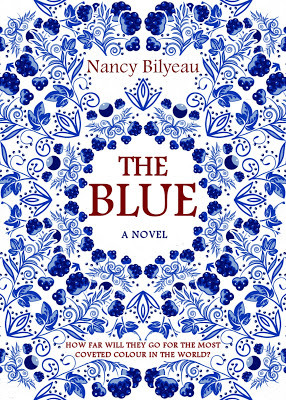
I was fortunate enough to win endorsements for THE BLUE from some wonderful authors:
'Definitely a winner!' -- Kate Quinn, author of The Alice Network
‘...transports the reader into the heart of the 18th-century porcelain trade—where the price of beauty was death.’ - E.M. Powell, author of the Stanton & Barling medieval mystery series.
'Bilyeau is an impressive talent who brings to life a heart-stopping story of adventure, art and espionage.' - Stephanie Dray, author of My Dear Hamilton.
'With rich writing, surprising twists, and a riveting sense of 'you are there,' The Blue is spine-tingling entertainment.' – Gayle Lynds, New York Times bestselling author of The Assassins
For the U.S. ebook, click here. For the UK ebook, click here.
Discount: 'The Blue' Costs 99 Cents for Ebook in US
My novel THE BLUE, set in the 18th century and following a Huguenot painter's secret mission to discover the formula for the most beautiful shade of blue ever created, is discounted to .99 for the ebook in the United States.

I was fortunate enough to win endorsements for THE BLUE from some wonderful authors:
‘...transports the reader into the heart of the 18th century porcelain trade—where the price of beauty was death.’ - E.M. Powell, author of the Stanton & Barling medieval mystery series.
'Bilyeau is an impressive talent who brings to life a heart-stopping story of adventure, art and espionage.' - Stephanie Dray, bestselling author of My Dear Hamilton.
'With rich writing, surprising twists, and a riveting sense of 'you are there,' The Blue is spine-tingling entertainment.' – Gayle Lynds, New York Times bestselling author of The Assassins
For the U.S. ebook, click here.
July 24, 2020
A Discount for 'The Blue'
My novel THE BLUE, set in the 18th century and following a Huguenot painter's secret mission to discover the formula for the most beautiful shade of blue ever created, is discounted to .99 for the ebook in the United States and the United Kingdom.

I was fortunate enough to win endorsements for THE BLUE from some wonderful authors:
‘...transports the reader into the heart of the 18th century porcelain trade—where the price of beauty was death.’ - E.M. Powell, author of the Stanton & Barling medieval mystery series.
'Bilyeau is an impressive talent who brings to life a heart-stopping story of adventure, art and espionage.' - Stephanie Dray, bestselling author of My Dear Hamilton.
'With rich writing, surprising twists, and a riveting sense of 'you are there,' The Blue is spine-tingling entertainment.' – Gayle Lynds, New York Times bestselling author of The Assassins
For the U.S. ebook, click here.
For the U.K. ebook, click here.



